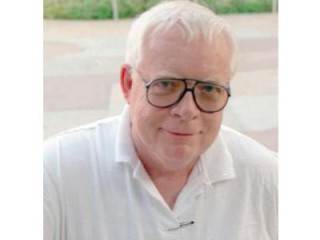
Algis Budrys biography
Date of birth : 1931-01-02
Date of death : 2008-06-09
Birthplace : Königsberg, East Prussia
Nationality : Lithuanian-American
Category : Arts and Entertainment
Last modified : 2011-07-03
Credited as : Science-fiction writer, editor and critic, Frank Mason, Alger Home, Paul Janvier
0 votes so far
Algis published his first science fiction story called "The High Purpose", which appeared in Astounding Science Fiction in 1952. Beginning in 1952 Budrys worked as editor and manager for such science fiction publishers as Gnome Press and Galaxy Science Fiction. Some of his science fiction in the 1950s was published under the pen name "John A. Sentry", a reconfigured Anglification of his Lithuanian name. Among his other pseudonyms in the SF magazines of the 1950s and elsewhere, several revived as bylines for vignettes in his magazine Tomorrow Speculative Fiction, is "William Scarff". He also wrote several stories under the names "Ivan Janvier" or "Paul Janvier." He also used the pen name "Alger Rome" in his collaborations with Jerome Bixby.
Budrys's 1960 novella Rogue Moon was nominated for a Hugo Award, and was later anthologized in The Science Fiction Hall of Fame, Volume Two (1973). His Cold War science fiction novel Who? was adapted for the screen in 1973. In addition to numerous Hugo Award and Nebula Award nominations, Budrys won the Science Fiction Research Association's 2007 Pilgrim Award for lifetime contributions to speculative fiction scholarship. In 2009, he was the recipient of one of the first three Solstice Awards presented by the SFWA in recognition of his contributions to the field of science fiction.
Budrys was also a critic for Galaxy Science Fiction, a book editor for Playboy, a longtime teacher at the Clarion Writers Workshop and an organizer and judge for the Writers of the Future awards. In addition, he worked as a publicist; in one publicity stunt, he erected a giant pickle on the proposed site of the Chicago Picasso.
Author of books:
False Night (1954, novel)
Man of Earth (1956, novel)
Who? (1958, novel)
The Falling Torch (1959, novel)
The Unexpected Dimension (1960)
Some Will Not Die (1961, novel, rev. of False Night)
Budrys' Inferno (1963)
The Furious Future (1963)
Truman and the Pendergasts (1963, biography)
The Amsirs And The Iron Thorn (1967, novel)
Bicycles: How They Work and How to Fix Them (1976, nonfiction)
Michaelmas (1977, novel)
Blood and Burning (1978)
Benchmarks: Galaxy Bookshelf (1984)
Hard Landing (1993, novel)
Writing to the Point (1994)
Outposts: Literatures of Milieux (1996)
Entertainment (1997)
The Electric Gene Machine (2000)
The Death Machine (2001)
















